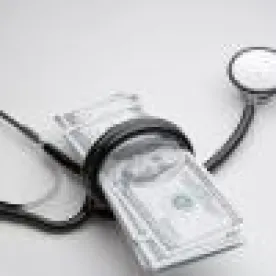The latest COVID-19 stimulus bill, the American Rescue Plan of 2021 (the “Act”), enacted on March 11, 2021, provides $1.9 trillion in funding for various COVID-19 relief measures. However, while the Act includes many funding provisions, including those funding direct assistance to lower-income individuals and families, expanding “Obamacare” insurance subsidies and availability, increasing federal medical assistance percentage (“FMAP”) rates for Medicaid programs under certain circumstances, supporting public health workforce development, funding technical assistance to skilled nursing facilities (“SNFs”), and bolstering COVID-19 vaccine and testing efforts, it also has a few provisions that create new or directly augment existing financial supports available to providers and hospitals that have sustained losses during the pandemic.
Funding Allocations and Reimbursement Provisions Affecting Providers
The Act’s direct assistance to providers focuses on providers in rural areas, presumably given the dire financial situation of many rural hospitals struggling to meet the health needs of rural populations. Section 1002 of the Act provides $500 million in funding to develop rural health care capacity through a new grant program administered by the U.S. Department of Agriculture, which funds must be used to increase vaccine distribution capacity, increase surge capacity and telehealth capabilities, support staffing and reimburse for lost revenue attributable to COVID-19.
More significantly, Section 1150C of the Act provides $8.5 billion in funding to reimburse rural health care providers for health care related expenses and lost revenues attributable to COVID-19. Any such payments made to parent organizations receiving on behalf of a subsidiary rural health care provider must be distributed to the subsidiary provider. Similar to conditions the CARES Act places on grants distributed through the U.S. Department of Health and Human Services Provider Relief Fund (“PRF”), the Act specifies that such funds cannot be used to reimburse any expense or loss that has been reimbursed from another source or that another source is obligated to reimburse.
Beyond funding assistance to rural health providers, Section 9819 of the Act critically mandates that disproportionate share hospital (“DSH”) payment allotments be recalculated and adjusted as needed to assure that the DSH payments to eligible hospitals are not negatively affected by COVID-19 related FMAP increases. Additionally, the Act allocates $50 billion to the Federal Emergency Management Agency’s Disaster Relief Fund, to which eligible non-profit hospitals (and other non-profit providers) can apply for additional financial assistance.
The Tap Runs Dry: Broader Provider Relief Omitted from the Act Amid A Ramp Up in Oversight
Perhaps most notable for the provider community at large, however, are the Act’s omissions: it contains neither additional allocations to fund the PRF nor forgiveness of Medicare Advanced and Accelerated Payments or conversion of such payments into a grant program, as urged by the American Hospital Association, to support hospitals still struggling with losses incurred from COVID-19 in 2020. The Act did provide a mere $5 million in funding to support HSS OIG oversight of funds used to prevent, prepare for, and respond to coronavirus. Presumably such funds will go towards staffing HHS OIG’s oversight of the PRF, which as of January 15, 2021, has already distributed over $120 billion of its $178 billion fund to eligible providers over various tranches since April of 2020.
Against this backdrop, HHS OIG has begun to ramp up its auditing and oversight activities related to COVID-19 programs, specifically targeting providers’ use of telehealth during COVID-19 and recently announced no less than eight audits related to the provision of care during COVID-19. While oversight begins and reporting deadlines near for providers who received PRF grants, HHS continues to make routine changes to the FAQs and various guidance documents that govern the PRF. Most concerning is the fact that providers have yet to receive any guidance on how to return excess PRF funds not used by the reporting deadline, or what may be their repayment obligations if business insurance claims related to COVID-19 losses are paid out after the reporting deadline. While more guidance is expected in coming weeks and months, it appears that the faucet used to fund various provider relief efforts on a large scale has been shut off, the tap has run dry, and the focus has now shifted to broader economic recovery and oversight of funds already allocated and expended by providers.




 />i
/>i
